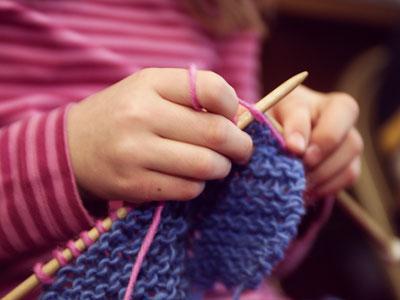To answer the question of who such a craftsman is, one cannot do without an excursion into history. It’s worth digging deep. And you should start with the ancient crafts of man. Handicraft in the past developed constantly, but this continued until the introduction of industrial production. With its heyday and the improvement of technological lines, many products of manual original labor became non-competitive. They were supplanted by the products of the shops of factories.
The concept of "artisan"
The essence lies in the root of the desired word. A person who owns any craft at a sufficient level to produce goods for sale, could well be called that in the Middle Ages. The work was carried out piece by piece to order or a batch of goods (products) for sale was made.
As a rule, such an activity was monotonous and did not differ in constant creative initiative. A man learned some kind of craft and improved his skills. Knowledge is usually passed on through the family line from parents to children. But it happened that a man came into the house as an assistant, became a student, then an apprentice, and after that he replaced a mentor.
Who is a craftsman in relation to our time? In its pure form, this kind of activity is now almost not preserved. All crafts have become professions. They are taught at educational and industrial complexes, vocational schools, technical schools, universities. If there were separate areas of handicraft, then only where technology and automation could not replace individual manual labor. Some activities can still be called craft. But they border on art so closely that it is difficult to draw a clear line between them.
History and Modernity
Now, speaking about handicrafts, as a rule, they mean the work of a person who does the work using the artisanal method, while using tools and devices created by his own hands. For example, you can make a jug of clay with your hands only on a potter’s wheel. Buy it in the store will not work. Tools and equipment for weaving baskets from vines, dishes from birch bark, hats from straws are also not for sale. Masters make them themselves. Can this and other similar products made by masters of pottery, weaving, and birch bark be considered as handicrafts? Of course, the way it is.
Who is the craftsman of Ancient Russia? This is any person producing goods. The blacksmith was engaged in forging metal. The shoemaker sewed shoes and tailor clothes. The baker had bread, the pharmacist had medicine. The carpenter was engaged in wood, the bricklayer built houses. There was a clear division according to specialization. Artisans differed in the direction of the type of activity: engraver, jeweler, pastry chef, tinsmith, undertaker. There was a time when, in addition to the name, a person of his specialization stood out from the set for a specific individual: Semyon-cooper, Ivan-saddle-bear, Yasha-zolotar, Petka-pechnik, Vaska-chimney sweep.
All means of production and equipment, as a rule, were in the master’s house or in his yard. The blacksmith had a workshop with a mining and anvil, the baker had his own stove. The tanner made tanning hides at home. And many other artisan artisans did the same: glassblowers, millers, gunsmiths, barbers, etc.
Specification
In the time of Rus, 64 basic occupations of artisans were distinguished. Specialists identified among them more than a dozen groups - workshops. In some, craftsmen made weapons and armor, in others horse harnesses, in others - all kinds of utensils (iron, copper).Pottery was allocated in a separate direction. There were also separate artisan jewelers.
Joiners, carpenters, turners were engaged in wood. Separately from them, the Bochars existed. Masons built houses and bridges. Tanners made skins, shoemakers made shoes. Weavers made fabrics, tailors sewed clothes from them. Particularly distinguished were artisans producing food - in mandatory areas: butchers, breadbags, kalachniks, cakes, brewers, fermenters.
The sensible artisan was always held in high esteem. He was considered a wealthy man. Now it’s rarely possible to meet a craftsman. If you really come across truly authorial products of manual (piece) manufacture, then it is somehow related to folk crafts, has a certain demand and is appreciated quite high.
How to become a craftsman?
If you do not go into details, then every person who has mastered the profession is to a certain extent a craftsman. On the other hand, not every worker produces finished products. An even smaller percentage of those who can trade it themselves. So it turns out that in the pure state of artisans today there are practically no left.
But then there are new activities. Still cooked in schools of painters, plasterers, tilers. The services of drywall, roofers, carpenters are in demand. Not everyone is ready to admit that they act as entrepreneurs and indicate their official status. Indeed, in this case, it is necessary to formalize activities under the law and pay taxes. The system is still far from ideal. Many remain in the shadows, looking for a part-time job at any level.
So who is a craftsman nowadays? This is a person who can create a product (product, service) with his own hands (wisely), fulfill an order under personal responsibility on time and with a guarantee of quality.








